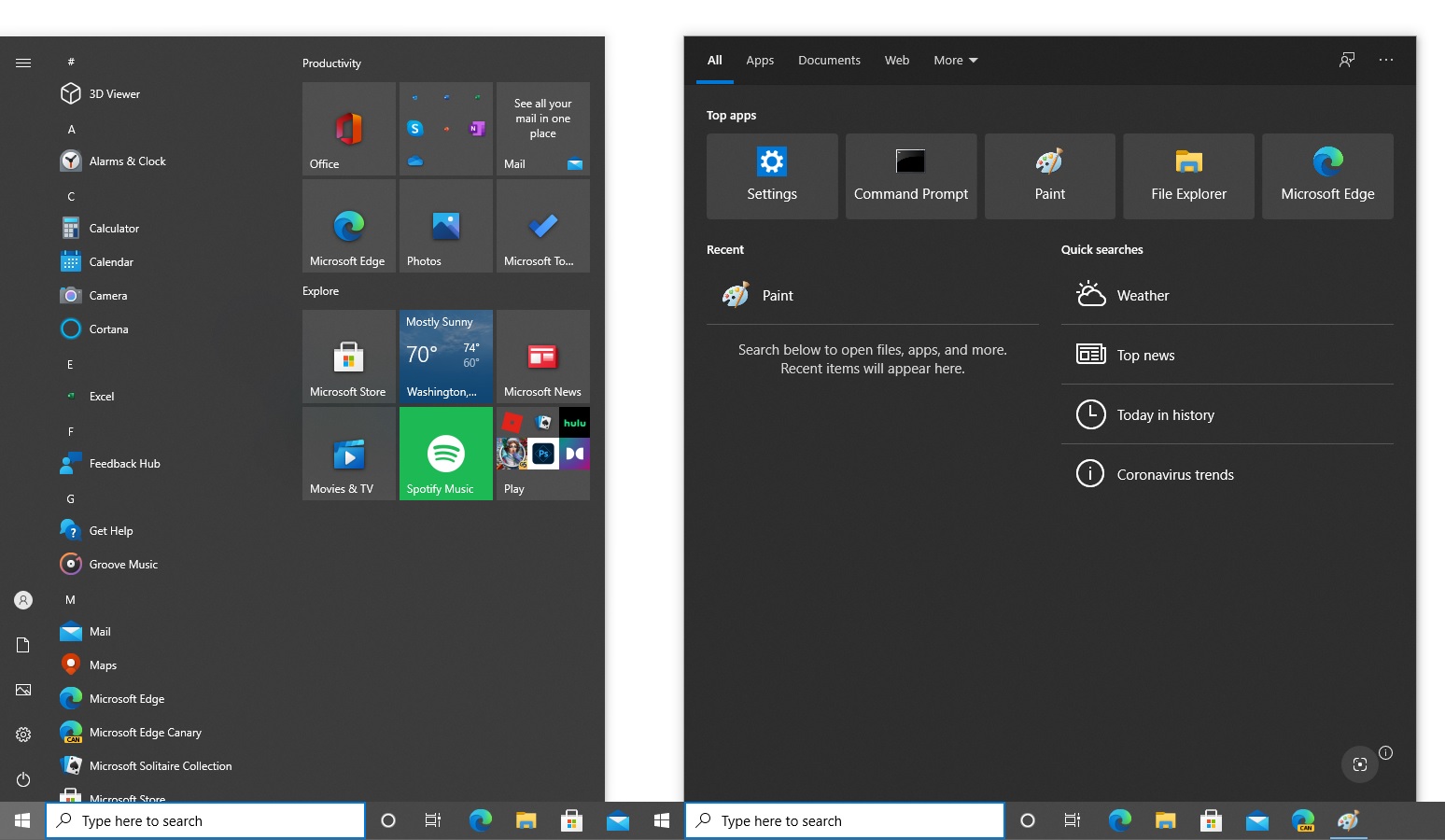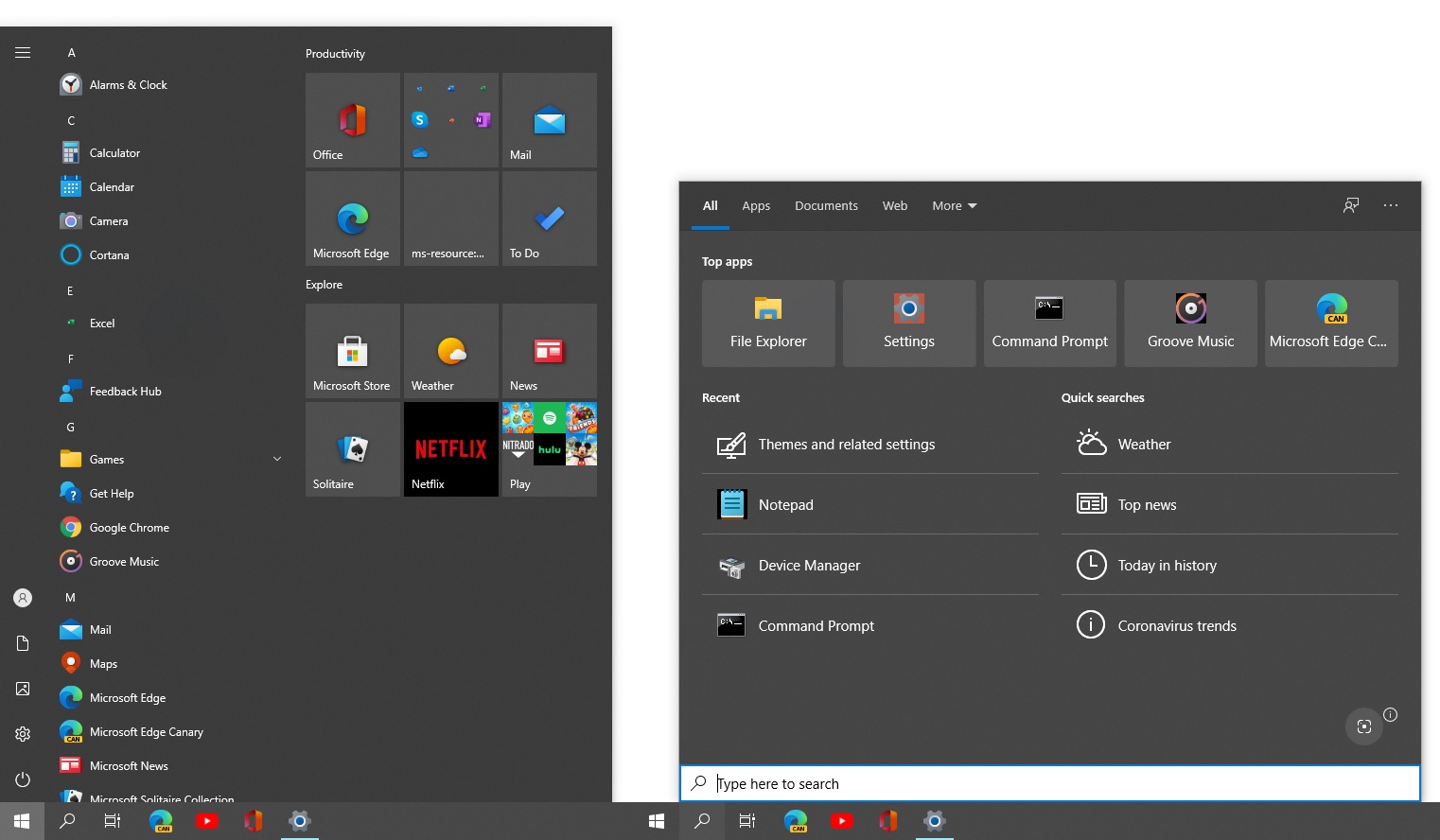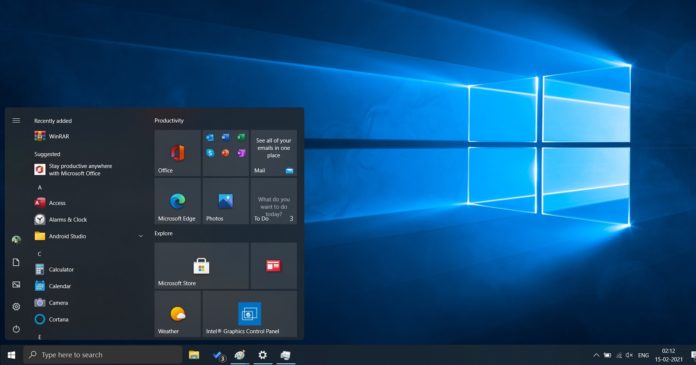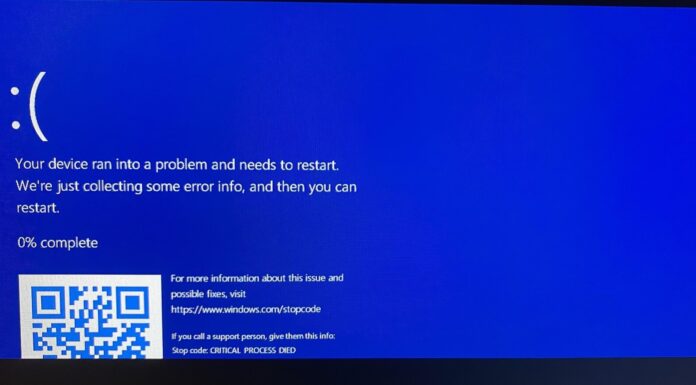If your Start Menu feels too big or too small, you can easily resize it and make more space to pin apps. To resize the Start Menu, you simply have to position your mouse cursor on its edge and drag your mouse. However, there’s a catch – the Windows Search interface is also affected when you change the size of the Start Menu.
In Windows 10 version 20H2 or older, the Windows Search interface respects the size of the Start Menu. You’ll notice the responsive UI of Search when you position your cursor on the top edge of the Start menu, then and drag your mouse up or down. This will change the height of the Start Menu, and Windows Search will also stay that way.
In some cases, when you reduce the height of the Start Menu, some Search UI elements might not scale properly, preventing users from viewing all the main functions of the search feature, such as the Bing screenshot search or “Switch to Microsoft Edge” banners.

In the preview builds, Search and Start Menu have become two separate entities in terms of window size too. You can now change the height of the Start Menu without affecting the Search interface.

That’s a major move and it’s possible that Microsoft will introduce a new way to change the height and the width of the search interface.
Since the Windows Search interface can be controlled via server-side updates, we wouldn’t be surprised if they bring this change to older versions of Windows 10.
Windows Search and Microsoft Edge integration
In addition to the aforementioned change, Microsoft is also working on another feature that will allow Edge to share your browsing data with Windows Search. In the upcoming version of Microsoft Edge, you can use a new sync service to share browser data across the search services on Windows 10, such as the taskbar search.
This setting is currently accessible in the Canary builds of Edge under the Settings > Profiles page. When the feature is enabled, Windows Search will get access to your Microsoft Edge browser data, such as your browsing history, frequently visited sites, bookmarked pages, and more.
At the moment, Microsoft is testing Edge integration in Windows Search only, but it’s possible that the feature will also come to other service-based services, including the digital assistant Cortana.






















